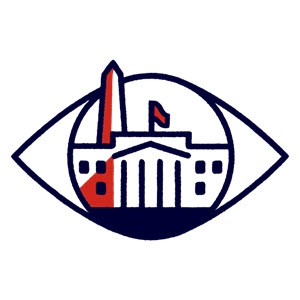IRS Releases Draft 2020 ACA Reporting Forms

The Internal Revenue Service (IRS) released the draft 2020 Forms 1094-C and 1095-C on July 13, 2020. While Form 1094-C remains the same, as expected, there are some changes to IRS Form 1095-C based on the introduction in 2020 of a new type of Health Reimbursement Account (HRA), the individual coverage HRA or ICHRA. Starting January 1, 2020, employers may offer employees an ICHRA instead of offering a traditional group health plan to reimburse medical expenses, like monthly premiums and out-of-pocket costs such as copayments and deductibles. An offer of an ICHRA counts as an offer of health coverage under the employer mandate of the Affordable Care Act (ACA), is subject to the ACA's affordability and minimum value requirements, and also affects ACA information reporting. The IRS has not yet published draft 2020 Instructions for Forms 1094-C and 1095-C.
Background on Form 1095-C
Internal Revenue Code (IRC) Section 6056 under the ACA requires Applicable Large Employers (ALEs) to report to the IRS whether they offer their full-time employees and their employees' qualified dependents the opportunity to enroll in minimum essential coverage (MEC) under an eligible employer-sponsored plan. An ALE is an employer that employed (any combination of workers within a controlled group) an average of at least 50 full-time employees (including full-time-equivalent employees) during the preceding calendar year. Employees are considered full-time in any month that they are credited with at least 30 hours of service per week, on average, or 130 hours of service in the month.
Form 1094-C is the transmittal report which accompanies and summarizes information from Forms 1095-C. A Form 1095-C is filed for each employee, who was full-time for one or more months during the calendar year and includes details of any health-care coverage offered to the employee, reported on a monthly basis. For self-insured plans, Form 1095-C must also be provided to any individuals who enrolled in qualified coverage, which may include non-full-time employees and any covered spouses and dependents. (One Form 1095-C may be furnished to the employee; i.e., it is not necessary to provide a form to each covered spouse/dependent.) Generally, Forms 1095-C must be furnished to employees by January 31 for coverage offered the previous calendar year, and must be filed with the IRS by February 28, if filed on paper, and by March 31 if filed electronically. Electronic filing is required for parties filing 250 or more forms. For calendar year 2020, Forms 1094-C and 1095-C are required to be filed by March 1, 2021 or March 31, 2021, if filing electronically.
Background on ICHRAs
Most of the Form 1095-C changes are related to ICHRAs. For a more detailed explanation of ICHRAs, see the Eye on Washington on HRA Options for Employers Expanded, issued July 29, 2019. Following the final regulations expanding HRA options, the IRS issued proposed regulations on September 30, 2019, that clarified how the ACA's employer-shared-responsibility provisions (IRC Section 4980H) will apply to ICHRAs.
To avoid penalties under IRC Section 4980H(b), an ICHRA must be affordable and provide minimum value. In general, the contributions made by an employer using an ICHRA must be high enough that an employee could purchase the lowest-cost silver plan in his or her market, and not pay more than 9.5 percent (as adjusted annually) of his or her income out-of-pocket. Plan costs are made available to employers through the CMS Look-up Table.
Proposed regulations state that while the use of any safe harbor is optional, existing affordability safe harbors may be used to determine affordability (Form W-2, rate of pay, federal poverty level) in conjunction with one or both of the new affordability safe harbors: the location safe harbor and the look-back-month safe harbor. Under the location safe harbor, an ALE may determine an employee's required ICHRA contribution for a calendar month, based on the cost of the applicable lowest-cost silver plan for the location of the employee's primary site of employment. Guidance is provided in the proposed regulations on how to determine an employee's primary site of employment for cases where it is not clear. To determine the ICHRA's affordability for the current year under the look-back-month safe harbor, this safe harbor allows a calendar-year ICHRA to use the cost of the lowest-cost silver plan offered on the Exchange/Marketplace in the employee's rating area during January of the prior year. For an ICHRA with a plan year that is not the calendar year, an ALE may use the monthly premium for the applicable lowest-cost silver plan for January of the current calendar year.
If an ICHRA is considered affordable, the proposed regulations state it is also considered to provide minimum value (MV). As with offers of employer-sponsored coverage, if an employee is offered an affordable ICHRA, the employee will not be eligible for a premium tax credit (PTC) toward coverage through the Exchange/Marketplace. In addition, if an employee chooses to be covered by an ICHRA, regardless of whether or not it is affordable, the employee will not be eligible for a PTC.
Highlights From the Draft 2020 Form 1095-C
Below are the changes included in this draft version of the 2020 Form 1095-C:
- New data fields on Form 1095-C include "Employee's age on January 1" and zip code (primary residence or primary employment), by month
- The "Instructions for Recipient" text has been revised and has carried over to a second page
- Eight new Line 14 offer codes have been created to accommodate ICHRA offers and new affordability safe harbors:
- 1L: ICHRA offered to employee only with affordability determined by using employee's primary residence location zip code
- 1M: ICHRA offered to employee and dependents with affordability determined by using employee's primary residence location zip code
- 1N: ICHRA offered to employee, spouse and dependents with affordability determined by using employee's primary residence location zip code
- 1O: ICHRA offered to employee only using the employee's primary employment site zip code affordability safe harbor
- 1P: ICHRA offered to employee and dependents using the employee's primary employment site zip code affordability safe harbor
- 1Q: ICHRA offered to employee, spouse and dependents using the employee's primary employment site zip code affordability safe harbor
- 1R: ICHRA that is not affordable offered to employee, employee and spouse or employee, spouse and dependents
- 1S: ICHRA offered to an individual that was not a full-time employee
Exactly how these new codes will be used in conjunction with information on Lines 15 and 16 of Form 1095-C is not yet clear, however this should be explained in the draft 2020 Instructions for Forms 1094-C and 1095-C when those are published.
ADP Compliance Resources
ADP maintains a staff of dedicated professionals who carefully monitor federal and state legislative and regulatory measures affecting employment-related human resource, payroll, tax and benefits administration, and help ensure that ADP systems are updated as relevant laws evolve. For the latest on how federal and state tax law changes may impact your business, visit the ADP Eye on Washington Web page located at www.adp.com/regulatorynews.
ADP is committed to assisting businesses with increased compliance requirements resulting from rapidly evolving legislation. Our goal is to help minimize your administrative burden across the entire spectrum of employment-related payroll, tax, HR and benefits, so that you can focus on running your business. This information is provided as a courtesy to assist in your understanding of the impact of certain regulatory requirements and should not be construed as tax or legal advice. Such information is by nature subject to revision and may not be the most current information available. ADP encourages readers to consult with appropriate legal and/or tax advisors. Please be advised that calls to and from ADP may be monitored or recorded.
If you have any questions regarding our services, please call 855-466-0790.
ADP, Inc.
One ADP Boulevard,
Roseland, NJ 07068
Updated on July 16, 2020



